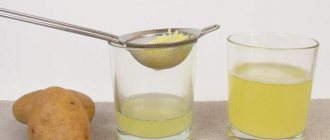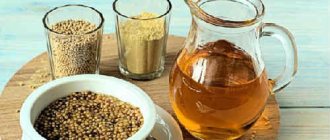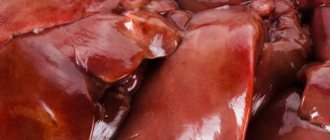Grapes have been known to people since ancient times. The vine was depicted on many coats of arms and adorned ancient statues. In ancient times, it was worshiped and deified because of its beneficial and healing properties. After all, previously, the berries and leaves of the plant, as well as grape juice, were used to treat various diseases; they could restore youth and beauty, improve health and well-being. And they generally drank grape wine instead of water, and even today only one glass of natural wine per day is considered to have health benefits. Grape juice is a drink that everyone has loved since childhood. A high-quality natural product has absorbed all the best properties of such valuable grapes and is still successfully used in home medicine, cosmetology, and, of course, in cooking. By the way, it was grapes that were given the honor of becoming the first plant that Noah planted after the flood.
Description and method of preparation
What is grape juice? This is a liquid that is obtained by squeezing grapes without adding sugar. For this, you can use any grape variety, it is better if it is not very sour. The best sugar ratio for grape juice is 17 to 20 percent.
Preparation of this drink is possible both at home and in production. The industry often produces juice from light grape varieties. Industrial enterprises that process grapes are often located next to the vineyards. Its collection begins in the morning before the berries are heated in the sun, so that the fresh juice squeezed from them does not ferment. The grapes are brought to the workshops, where they are first washed and then sent to a special conveyor that checks the quality of the product. Then the ridges are separated from the grapes and the clean berries are fed into the crusher. The grape must is separated and placed in a separate storage container, and the resulting pulp is sent under the press. The resulting juice is also sent to a storage container.
After this, the first-press juice, in which no fermentation occurs, is filtered and clarified using flocculants. These are often silicon dioxide and gelatin. It is then sent into a centrifuge. At the next stage, the liquid undergoes a process of fine filtration and cooling. Then, with the participation of liquid carbon dioxide, the cream of tartar is separated, or detartration. Then the juice is cleared of the sediment that was formed during filtering. The last stages of production are deaeration of the product, pasteurization and packaging of the product.
In this way, pure, directly pressed grape juice is obtained, which we see in a wide variety on supermarket shelves. It comes in glass jars and bottles, plastic, and cardboard boxes, so-called tetra-packs. It can be either pink, light yellow or light green. There is such juice with pulp and without pulp, clarified and unclarified. Here you can notice that the characteristics of unclarified juice are much higher than those of clarified juice.
Industrially, grape juice is produced very painstakingly and for a long time, but there is no other way, otherwise fermentation may occur in it.
Dry grape juice is also produced on an industrial scale, which is essentially a hygroscopic powder with a characteristic grape taste.
But the healthiest thing, of course, is a drink freshly prepared from high-quality ingredients and made at home. It is he who has all the valuable and medicinal properties that are present in grapes. It is this juice that is used to make wine; it produces strong and healthy chacha, or as it is also called grape vodka.
Composition and benefits of grape juice
Grape juice is a storehouse of useful components that are necessary for the proper functioning of our body. So, it contains more than 150 biologically active substances! It is believed that this drink is comparable in the number of elements to mineral water. It contains essential and non-essential amino acids, vitamins, micro- and macroelements, sugars and fiber.
Depending on the grape variety, the calorie content and content of useful elements will vary slightly.
However, in general, you can be guided by the following data:
| Calorie content | 54-70 kcal |
| Squirrels | 0.4 g |
| Fats | 0.1 g |
| Carbohydrates | 14.8 g |
| Water | 85 g |
| Sahara | 14.2 g |
| Cellulose | 0.2 g |
| Ash | 0.22 g |
Find out the benefits of grape seeds, raisins, black grapes, Chardonnay, Pinot Noir, Cabernet Sauvignon.
Useful components of fresh juice:
- vitamins: B1, B2, B4, B5, B6, beta-carotene, C, K, PP;
- macroelements: potassium, magnesium, phosphorus, calcium, sodium;
- trace elements: iron, manganese, copper, fluorine, zinc;
- 16 amino acids;
- omega-3 and omega-6 fatty acids;
- saturated and unsaturated fatty acids.
Did you know? More than 70 million tons of grapes are grown annually in the world, of which 80-90% is used to make wine, up to 10% is reserved for fresh consumption, and another 6% of the berries is used to make raisins. The world leaders in berry production are Italy, China, the USA, France, Spain and Turkey.
After drinking a glass of fresh grape juice, a person will immediately feel a surge of strength and vigor. Juice from light varieties has a large amount of iron, while a dark drink, on the contrary, contains less ferum, but it has more pronounced antioxidant properties. Fresh grape juice affects the body in the following way:
- improves hematopoietic processes;
- cleanses the liver;
- normalizes heart function;
- has a mild diuretic and laxative effect;
- normalizes Ph level in the body;
- normalizes intestinal functioning;
- normalizes brain activity and cognitive functions;
- provides an antioxidant effect, protects against radicals, prevents the development of cancer;
- lowers LDL levels (“bad cholesterol”);
- has antiviral and antibacterial effects.
Learn how to make champagne, grape wine, raisins.
A drink made from tart berries can fill the body with energy and improve tone in a matter of seconds. So, if you drink a glass of juice after physical activity, you can avoid sore throat, muscle weakness and pain, as well as fatigue. We will consider the healing properties of the drink and its use in various pathologies in more detail below.
Chemical composition and beneficial properties of grapes
Grape juice contains a useful vitamin composition and a valuable mineral complex, thanks to which it has all its medicinal and healing properties. The energy value of such a product is approximately 70 kcal. It contains 0.3 grams of protein and 0.2 grams of fat. The carbohydrate part is allocated 16.3 grams. It also contains alcohol, fiber, water, ash and organic acids in small doses.
The vitamin composition includes B vitamins, in particular thiamine, riboflavin, pantothenic and folic acid, pyridoxine. It also contains ascorbic acid, tocopherol, niacin and vitamin H.
The mineral complex is represented by potassium, calcium, magnesium, sodium, phosphorus and chlorine. Among the microelements in its composition, one can highlight a high content of cobalt, almost 10% of the daily norm, iodine and chromium. The juice also contains iron, manganese, copper, fluorine, molybdenum and zinc.
Grape juice is rich in non-essential and non-essential amino acids, which are very beneficial for the body, as they play an important role in protein synthesis.
Potassium, which it is rich in, helps strengthen the heart muscle and blood vessels, so it is recommended for use for the prevention of diseases of the cardiovascular system.
Many people compare grape juice with mineral water due to the variety of elements included in its composition. Indeed, it contains quite a lot of water, but at the same time it is sufficiently enriched with vitamins, mineral salts, acids and sugars. That is why the grape drink is able to cleanse the intestines well and helps remove fluid and harmful substances from the body.
Glucose and fructose included in this product are easily digestible sugars. Despite the fact that their content in grapes is quite high, grape juice is often used in various diet programs, as it speeds up metabolism and can remove dangerous toxins and harmful waste from the body, which makes fat burning more intense. In addition, this sugar content makes it a very nutritious product, remarkably saturates the body with energy and vigor, which in turn allows you to forget about the feeling of hunger. Also, the sugar contained in the drink has antioxidant properties, meaning it can protect protein molecules from breakdown.
Grape juice contains large quantities of pectin substances, which affect the level of bad cholesterol in the blood. They also contribute to the body’s natural protection from the environment and the removal of free radicals from it.
The usefulness of grape juice largely depends on the grape variety that was used to obtain this product. For example, dark juice from a grape variety called “Isabella” has an antitumor effect, and is especially useful against breast cancer. The drink contains the natural pigment anthocyanin, which prevents the growth and development of cancer cells, thereby being a powerful tool for the prevention of cancer.
Other beneficial properties of this drink include:
- activation of brain activity and improvement of memory;
- regulation of acid-base balance in the body;
- prevention of atherosclerosis and arthritis;
- saturation of cells with oxygen;
- preventing the development of anemia;
- beneficial effect on the kidneys and heart;
- normalization and improvement of the nervous system;
- laxative and diuretic effect;
- prevention of stress and depression;
- participation in the process of hematopoiesis;
- prevention of blood and circulatory system diseases.
Light grape varieties have powerful energy properties. Many reviews say that if you drink grape juice immediately after training, you can instantly get rid of muscle pain, weakness and fatigue. It is also recommended to take the sports supplement creatine with this juice, which is widely used by bodybuilders to increase strength and build muscle mass.
Natural grape juice
Ideally, drink natural juice, preferably freshly squeezed. In order to understand the benefits of natural grape juice in this drink, you should first study its composition, its original, natural version.
Grapes, by themselves, contain a huge amount of different vitamins, minerals and inorganic trace elements. Among them are glucose, fructose, magnesium, iron, potassium, phosphorus, iodine, copper, vitamins of various groups, and mineral salts.
The most interesting thing is that we have named only part of everything that is in grapes, and, consequently, in grape juice.
Drinking grape juice in reasonable quantities helps strengthen the body's immune system, improves metabolism, stimulates brain activity, and has a positive effect on the cardiovascular system and heart function in general.
But there is one important point - grape juice should be consumed in fairly large quantities only after consulting a doctor.
This is because it can only harm people like diabetics. The reason for this is the rather high concentration of glucose, which increases blood sugar levels, which is especially dangerous for people dependent on insulin.
We recommend reading:
The benefits of orange juice - the properties of the juice and the effect on the human body (video + 145 photos)
The benefits and harms of parsley juice - how to prepare and take it correctly! 130 photos + videos of using healthy parsley juice
The benefits and harms of carrot juice - a review of vitamins, trace elements and minerals in carrot juice (video + 85 photos)
Use in folk medicine
In folk medicine, natural freshly squeezed grape juice has been used for quite a long time, due to its high-quality and healing composition. Its medicinal properties are still often used for medical purposes today. This drink serves for the prevention and treatment of various diseases and has a fairly wide range of uses:
- used for the treatment and prevention of heart and vascular diseases;
- protects against stroke and heart attack;
- effectively eliminates swelling;
- removes harmful cholesterol, toxins and waste;
- normalizes blood pressure;
- light grape juice helps restore the body after heavy physical exertion;
- is able to remove mucus and fluid from the lungs, being an effective cough medicine, prevention of bronchitis and pneumonia;
- used for pleurisy, asthma and initial forms of tuberculosis;
- able to relieve sore throat, effective for laryngitis, sore throat and other diseases of the throat and oral cavity;
- the laxative effect of the juice helps get rid of constipation and alleviates hemorrhoids;
- The diuretic effect of the drink helps relieve the inflammatory process in kidney diseases, helps with nephritis and other chronic kidney diseases.
- helps get rid of nervous disorders and depression;
- has a beneficial effect on the walls of blood vessels, and therefore is useful for Alzheimer's disease and for elderly patients.
Home medicine recipes
For treatment, you need to use only natural juice, prepared at home using the correct technology from high-quality ingredients. The recipes used are quite simple, but before treatment it is necessary to consult a specialist. For effective results you need to follow a few simple rules:
- drink juice on an empty stomach;
- to avoid damaging tooth enamel, drink through a straw or rinse your mouth with water every time after drinking;
- You need to start treatment with small doses, gradually increasing the rate;
- The recommended treatment period is no more than one and a half months;
- The use of concentrated juice is usually not recommended; it is better to dilute it with water.
For atherosclerosis
Grape juice should be drunk 250 grams three times a day an hour before the main meal. The recommended course of treatment is about one and a half months.
For constipation
For chronic constipation, drink 500 grams of juice three times a day an hour before meals. The maximum treatment period is two months. This option is not recommended for gastritis with high acidity.
For gout
It is recommended to eat grapes for about three months. After this, you can start introducing the juice a little at a time. You need to drink it twice a day. In the morning on an empty stomach, and in the evening about forty minutes before meals. You need to start with small doses and gradually increase them, bringing them to 1.25 glasses of drink within five days.
Benefits of grape juice
We have already looked a little at the benefits of grape juice, but in fact we have only looked at a small part of all the good things that it can do for our body.
As mentioned earlier, grape juice is an ideal food product for people who suffer from heart or cardiovascular diseases. It will help strengthen blood vessels, normalize blood pressure, and generally reduce the likelihood of a heart attack.
If we talk about more general properties, grape juice does an excellent job of removing harmful substances and trace elements from the human body.
There is another group of people, healthier ones, who would benefit from adding grape juice to their diet. We are now talking about athletes who are actively training almost constantly.
This is because the benefit of homemade grape juice, without various additives with preservatives, also lies in the fact that it helps our body recover after heavy physical exertion.
We recommend reading:
Benefits of pumpkin juice: composition, indications and contraindications for use (120 photos + video)
- The benefits of tomato juice: review of beneficial properties, harm, recommendations and contraindications for use (95 photos and videos)
The benefits of pomegranate juice - beneficial properties, effects on the body and who should regularly drink pomegranate juice (125 photos + video)
The same story applies to a simple cold, because in fact this process is a serious burden for the body, and the immune system also becomes weaker.
The vitamins and minerals contained in grape juice will help you quickly overcome the disease and recover from it.
Use in cooking
This sweet and tasty product has found its place in cooking. It is delicious on its own, and its unique sweetness allows it to be used as a dessert. For example, in the Caucasus, churchkhela, a national Georgian delicacy, is prepared from it. It is made from boiled grape juice, to which corn flour is gradually added. Flour and this drink are also used to prepare another Georgian dessert - pelamushi. It is used to make jellies, various syrups, jams, delicious gravies and sauces. They even make jam, delicious homemade fruit juice and jelly from it. Cocktails are often made from grape juice. It's good for diluting a martini. Sometimes it also acts as a marinade. This marinade produces very tasty meat, chicken, and unsurpassed kebab.
Grape juice is the raw material for the production of wine, chacha and homemade moonshine. Lately you can often hear the term falsification of wine. In fact, this is a simple fake, which is achieved by diluting the wine with alcohol, water or infusing sugar syrup on the pulp and cake remaining after squeezing grape juice. There are also kosher wines, which are produced under very strict rules. For example, Jews are prohibited from drinking wine that may be used in the ceremonies of other religions. And many Jews firmly believe that if you boil this drink, it will become unsuitable for such rituals. Some of the most ardent followers recommend boiling grape juice to obtain a kosher product from it.
Grape juice mash is made mainly from Isabella grapes, which are grown in temperate climates and are not suitable for making wine. With its help you can make grape vodka called “chacha”, “grappa”, “kizlyarka” or “rakia”.
From grape juice through fermentation you can get valuable and healthy grape vinegar.
Recipe for marinade with grapes for chicken
In order to appreciate the grape juice marinade, you need to try the dish prepared with it. For this you will need:
- water – 400 ml;
- fresh grape juice – 400 ml;
- citric acid – half a teaspoon;
- cloves – 5 pcs;
- barberry;
- allspice – 10 peas;
- peppercorns – 5 peas;
- sugar – 1 teaspoon;
- salt – 2 teaspoons.
Mash some allspice peas, peppercorns and barberries. Add salt and sugar and stir. Instead of sugar, you can use honey in an equivalent amount. Add the remaining pepper and cloves, pour grape juice over it all. Dilute citric acid in water and add to the mixture. You can warm up the marinade a little to speed up the process of dissolving the sugar and salt. Pour it over the chicken and leave to marinate for about 5 hours.
Grape juice - benefits and beneficial properties of grape juice
Fragrant bunches of grapes accumulate the power and warmth of the sun's rays, the generosity and fertile juices of the earth; the beneficial properties of grapes have been known since ancient times and were highly valued not only by cooks and winemakers, but also by doctors and healers. In order to preserve the benefits of grape juice for a long time, people began to make wine. Today, many doctors discuss the benefits and harms of red wine for the body. But freshly squeezed grape juice is considered one of the healthiest products with powerful healing powers.
Benefits of grape juice
The juice obtained from grapes contains a lot of valuable and useful substances: vitamins (carotene, B1, B2, B3, ascorbic acid), minerals (magnesium, calcium, potassium,
phosphorus, iron, cobalt), organic acids (malic, tartaric, citric), as well as sugars (glucose, fructose), fiber, amino acids. The nutritional value of grapes largely depends on the variety of berries; some varieties contain more acids and sugars, some varieties are richer in amino acids and vitamins. Grape juice is a wonderful nutritional product that is used for vitamin deficiencies, during the rehabilitation period after operations and serious illnesses. The juice saturates the body with everything it needs, and the high carbohydrate content supplies the body with energy. Glucose from grape juice is immediately absorbed by the body, this is very useful for stimulating brain function, but is not useful for those who have problems with the pancreas and insulin production (diabetes). Antioxidants in the juice promote cell rejuvenation, protect against decay and attack by free radicals, and remove dense cholesterol from the body, which forms plaques on the walls of blood vessels and causes the development of atherosclerosis. Pectin substances and fiber help cleanse the body of toxins, toxins and harmful substances (poisons, radionuclides). To the beneficial properties
grape juice can also be attributed to the prevention of cancer; it has been proven that regular consumption of dark grape juice prevents the development of cancer tumors. For anemia, grape juice is the first remedy; the high content of iron in an easily digestible form helps to increase hemoglobin and improve the supply of oxygen to cells. Grape juice also has laxative and diuretic properties and is used to eliminate constipation, swelling, and remove excess fluid from the body.
Making juice at home
Making grape juice at home is not difficult. Ripe, whole and undamaged berries should be removed from the grapevine. They need to be thoroughly washed, dried, and then squeezed using a juicer or using a screw press. Real freshly squeezed juice is ready.
But if you need to leave it for the winter, then you should prepare canned juice. To do this, place the berries in a colander and briefly lower them into water brought to a boil. Then they are transferred to another container, preferably enamel or glass, and covered with a lid. After cooling, the juice is squeezed out, heated to approximately 90 degrees and poured into pre-sterilized bottles or jars. Then you need to close them with lids, roll them up and cool. Home canning of various compotes is done in the same way.
If you need to get clarified, clear juice, then you need to let the pressed drink sit for about four days, then drain it, leaving most of the sediment at the bottom. You can filter it through cheesecloth and heat it again to 90 degrees. Pour the prepared drink into clean jars and preserve.
You can also prepare concentrated grape juice. To do this, when reheating, evaporate the product until it is halved in volume. The boiled drink must be bottled and hermetically sealed. Evaporated grape juice can be used to prepare a reconstituted product. As well as the use of concentrated juice, recipes for various culinary dishes are provided.
As you can see, the home method of making juice is less labor-intensive and simpler. And if you have a juicer at home, then making such a drink is even easier. This product will contain fewer vitamins due to steaming at high temperatures, but the content of pectin substances will increase.
The benefits of grape juice: how to prepare the drink at home
Any product you prepare yourself will be much healthier. To get a quality drink, you need to choose only ripe berries. Rinse the grapes well under running water and dry. You can squeeze the juice through a juicer or a screw press.
Before the procedure, transfer the grapes to a colander, which is placed in a pan of boiling water. Afterwards, place the berries in an enamel container and cover with a lid. As soon as the grapes have cooled, squeeze out the juice, heat to 90 degrees and pour into jars. Containers must be rolled up and placed in a cold room. The process is similar to preparing canned compotes.
If transparent nectar is needed, it will need to be left for four days. Afterwards the juice is poured so that the sediment remains at the bottom. The drink is again heated to 90 degrees and poured into containers. At home, the drink is prepared much faster, but you can’t do without heating it.
Doctors recommend consuming freshly squeezed juice of the product, as more beneficial properties are retained. You can also use varieties with seeds. There is no need to throw away the cake, as it is used for cosmetic purposes.
Cocktails, marmalade, sauces and other dishes are prepared from grape juice. You can make a very tasty cocktail by mixing 40 ml of grape and 60 ml of orange juice. If desired, you can add 20 ml of coconut syrup. As a cooling drink, add a couple of ice cubes and beat everything with mixers or a blender.
Application in cosmetology
Grape juice has been used in cosmetology since ancient times. Ancient beauties used this drink to rejuvenate their skin, slowing down the signs of aging. Currently, this product can be used to moisturize, tone and cleanse the skin. Based on it, face masks are prepared that will make the skin velvety and fresh. It is also able to tighten sagging skin, give it elasticity and eliminate sagging. Masks based on grape juice have a positive effect not only on the skin, but also on the hair. They are capable of:
- improve complexion;
- get rid of freckles and age spots;
- cleanse pores, get rid of pimples and acne;
- smooth out small wrinkles;
- eliminate the first signs of skin aging;
- strengthen the hair roots and cleanse the scalp, helping to get rid of excess oil.
It should be remembered that grape juice can cause allergic reactions, so before use it is necessary to test any product containing it on the crook of your elbow. Even slight redness of the treated area of skin indicates that the use of this juice is contraindicated.
Toning mask based on grape juice
To prepare the mask, you need to use green grapes. Its production involves the following steps:
- crush some unripe berries;
- moisten a gauze napkin in this juice;
- cover your face with a napkin and leave for about twenty minutes;
- rinse off the remaining juice with warm water;
- Apply nourishing cream to your face.
This mask will create a tightening effect and eliminate fine wrinkles.
The benefits of grape juice in cosmetology
Grape juice has been used by cosmetologists for a long time, as the product is characterized by tonic, cleansing, and moisturizing properties. Grape juice is added to a variety of cosmetic products: creams, lotions, masks.
Such products have a very good effect on the condition of the skin and hair:
• refresh the complexion;
• clean pores, eliminate acne, rashes, and other irritations;
• the skin becomes elastic, firm and soft;
• freckles and age spots lighten;
• hair is strengthened, split ends are cured, fat content is reduced;
• small wrinkles are smoothed out, aging skin is brought back to normal.
You can always prepare a mask at home using grape juice that will give your skin a fresh tint and velvety feel. The drink also actively prevents flabbiness. Since the juice can cause an allergic reaction, the product must first be applied to the inner bend of the elbow. This will help avoid negative consequences.
Removing Grape Juice Stains
How to remove stains left by grape juice? Almost every housewife has asked this question in her life. Red grapes are especially terrible in this regard. Fresh stains are easy to remove. They need to be treated with ammonia or soda solution (a teaspoon per glass of water), and then rinsed with warm water. Gasoline soap works well for removing old stains. If there are still red-violet stains on the fabric, it is recommended to boil the items with salt or hydrogen peroxide. It is better to soak white linen or cotton fabrics in milk before washing. Citric acid can help remove red grape stains. To do this, dilute 2 grams of citric acid in 20 ml of ethyl alcohol and heat slightly. Wipe the stain with this solution, and then rinse the item in warm water. Then wipe with a 1% solution of ammonia and rinse again in water with a pinch of citric acid added to it. Very fresh stains can be removed simply with boiling water.
Harm of grape juice
There are several rules for drinking grape drink. If you neglect them, you can provoke the development of unpleasant and harmful consequences for the body:
- Grape juice cannot be combined with anything. In combination with any foods and other drinks, it can cause digestive upset.
- If the liquid is planned to be taken regularly, for example, for medicinal purposes, kvass, beer and other compounds that easily begin to ferment should be completely excluded from the diet.
- Obesity, tendency to gain weight, gallstones, severe exhaustion require dosed use of the composition. If, against the background of such conditions, you drink it in unlimited quantities, the manifestations will only intensify.
- The sweetness of the drink and its chemical composition can lead to tooth decay. After drinking grape juice, you should rinse your mouth with clean water.
Today you can find reconstituted grape juice on sale. Its composition is really not much different from the natural product, but there is still one negative point. Its long-term storage can lead to the production of substances with carcinogenic properties. Therefore, you should drink it within 1-2 days.
Contraindications and harm of grape juice
In some cases, drinking grape juice can cause serious harm to the body, so it is worth knowing its contraindications, and in these cases, limit the consumption of juice or completely remove it from the diet.
During pregnancy, grape juice can only be beneficial in the first and second trimester. In the later stages, drinking this drink can lead to a woman’s weight gain and rapid fetal growth, which can significantly complicate labor. And during breastfeeding (BF), such drinks can cause colic in the baby and lead to increased gas formation. Therefore, grape juice is contraindicated for a nursing mother.
Children under two years of age are also not recommended to use it, as this can lead to unexpected allergic reactions, destroy tooth enamel and cause bouts of flatulence. After two years of age, you need to give them juice diluted with water. And black grapes can lead to a decrease in hemoglobin in the blood, so dark juice should not be given to children.
Also, grape juice is contraindicated for diabetes, obesity, stomach diseases, exacerbation of chronic liver and kidney diseases, and intestinal ulcers. It is prohibited for both liver cirrhosis and diarrhea, as it has a laxative effect. At a late stage of tuberculosis, you should also not drink this drink. Grape juice is strictly contraindicated for pancreatitis.
There is also no need to use this drink if you have an individual intolerance to the components or a tendency to allergies.
Grape juice produced industrially is often deprived of many of its beneficial properties due to its heat treatment at high temperatures, which contributes to its long-term storage. In such a product, the formation of hydroxymethylfurfural is possible. This is a very toxic substance, which at high concentrations can lead to cancer. The maximum permissible concentration should not exceed 20 mg per liter of drink.
Best materials of the month
- Why you can't go on a diet on your own
- 21 tips on how to avoid buying stale food
- How to keep vegetables and fruits fresh: simple tricks
- How to curb your sweet cravings: 7 unexpected products
- Scientists say youth can be extended
The benefits and harms of grape juice for pregnant women and children
Thanks to its unique composition, grape juice is very useful for expectant mothers and the fetus, but only up to a certain point. From about 28 weeks of pregnancy, doctors strongly recommend completely eliminating it from a woman’s diet. And the reason is this - despite the low calorie content, it is in the late stages of pregnancy that this drink begins to contribute to the mother gaining weight too quickly and the child growing too actively. All this can lead to complications during childbirth. If a woman drinks grape juice during breastfeeding, the baby may develop flatulence, so you will have to forget about this drink until the baby is completely weaned.
Children can be given grape juice only from the age of two, since in an earlier period it can cause allergies, bloating, diarrhea, and destruction of the enamel of weak baby teeth. And then, when introducing it into the baby’s diet, at first it is necessary to dilute the freshly squeezed juice with filtered water in a 1:1 ratio. You also need to ensure that the child does not drink juice from dark berries, as it helps reduce the level of hemoglobin in the blood.
conclusions
Grape juice has long been valued not only for its taste, but also for its remarkable healing properties. This product helps get rid of various diseases, promotes their speedy progression and is a prevention of such diseases in the future. It is valuable not only in the field of medicine, but also as a cosmetic product. Its antioxidant properties help remove waste and toxins from the body, which has a good effect on the condition of the skin and hair, and also promotes weight loss. Despite the fact that the calorie content of this product is quite high, it is still in demand in dietetics, as it helps cleanse the body, normalizes its water-salt balance, and also significantly speeds up metabolism. Such a drink can be harmful for people suffering from diabetes, liver and kidney diseases, with exacerbation of intestinal and stomach diseases, with pancreatitis, or if there is increased stomach acidity. It can also cause allergies, especially in children. Therefore, this juice should not be used by pregnant, nursing mothers and children under two years of age. It is also worth remembering that the best drink is juice prepared at home from high-quality natural ingredients. If you use a freshly squeezed drink rather than a store-bought one, the harm done to the body can be significantly reduced.
More fresh and relevant information about health on our Telegram channel. Subscribe: https://t.me/foodandhealthru
We will be grateful if you use the buttons:
Composition and characteristics of grape juice
Many lovers of the sweet berry are forced to give up eating it. The reasons can be very different: being overweight, having problems with stool, slowing down the digestion process. Fortunately, all these features do not apply to grape juice.
At first glance, a tonic and very tasty drink consists of only advantages, which are based on the following ingredients:
- Fruit water makes up up to 80% of the volume. It is rich in sugars, healthy acids, vitamins and mineral salts.
- Sugars, which are easily digested, are an excellent source of energy. They can also stimulate mental activity.
Advice: People who refuse to eat grapes because of their high calorie content do not need to exclude berry juice from their diet. This is a dietary product that, if the dosage is observed, will affect the condition of the figure in the most beneficial way and even speed up the process of getting rid of extra pounds.
- Organic acids are necessary to maintain the acid-base balance in the body and stimulate metabolism.
- Bioflavonoids, which grape juice is very rich in, neutralize the activity of toxins. This allows for effective prevention of cancer, bronchial asthma, atherosclerosis, and arthritis.
- Vitamins slow down the aging process and take part in maintaining the functioning of organs and systems of the body.
- The abundance of potassium has a beneficial effect on the condition of the heart muscle. Excess fluid is removed from the tissues, which relieves the load on the kidneys and heart.
- Another natural grape product is rich in tannins. These chemical compounds inhibit inflammatory processes, which leads to the normalization of the gastrointestinal tract.
- Magnesium, necessary for the effective functioning of the nervous and immune systems, helps improve overall health.
- Iron prevents the development of anemia, tissues begin to be more actively saturated with oxygen.
- Grape juice also contains other minerals (calcium, manganese, silicon, zinc, nickel, boron, silicon). They are responsible for the synthesis of hormones and maintaining tissue structure in the desired condition.
Unfortunately, due to the abundance and increased activity of these components, the benefits and harms of the drink can manifest themselves equally clearly. Therefore, you need to learn a few rules before introducing liquid into your diet.
The benefits and harms of grape juice for certain diseases
Even in the ancient world, the drink was considered a medicine, and in the 19th century a whole direction in medicine appeared - treatment with grapes (ampelotherapy). The product helps with certain diseases:
- cardiovascular failure - the heart muscle is restored thanks to potassium,
- reduction of temperature during colds, relief of cramps, fight against edema,
- treatment of bronchitis, pneumonia and tuberculosis,
- helps block carcinogens, stopping the growth of cancer cells.
Health may be harmed if the product is consumed for certain pathologies:
- ulcer,
- gastritis,
- diabetes mellitus,
- obesity,
- chronic kidney disease,
- caries.
For pancreatitis, gastritis and stomach ulcers
Grape juice is saturated with acids, so it is contraindicated for stomach and duodenal ulcers, gastritis and pancreatitis. Harm is expressed in undesirable processes:
- insulin levels increase
- the load on the pancreas increases,
- intestinal fermentation increases,
- gases accumulate
- there is pressure on the abdominal organs,
- hypersecretion is observed.
With gastritis, drinking the drink leads to:
- to nausea,
- vomiting
- heartburn,
- bloating,
- colic.
Although the juice has antibacterial and anti-inflammatory properties, it should not be consumed if there is high acidity.
For hypertension
The beneficial properties of black grape juice can lower blood pressure. You should start taking it with 100 g three times a day, gradually increasing the single dose to 200 g. The juice should be diluted with water in a 1:1 ratio. The course of treatment is at least 6 weeks. One glass has the beneficial property of reducing blood pressure by 10 units. With continuous use, blood pressure may drop to normal levels. There is no addiction, as well as side effects, but consultation with your doctor is required.
How to make grape juice at home
Berries of any color are suitable for cooking. In any case, the benefits of homemade grape juice cannot be overestimated. The healthiest benefits come from freshly picked berries. There are several features of preparing the product:
- with the manual method, the berries are crushed by hand: the resulting juice is filtered and pasteurized,
- a juicer with a “squeeze” function allows you to remove pulp from the product,
- Sugar is added to taste, but you can do without it,
- when cooked, sprigs of plants can add tartness and color to the finished product,
- Most often, the juice is made from dark grapes, but you can mix dark and light varieties.
Important! Pasteurization is required, otherwise the drink will ferment in a few days.
Through a juicer
With the help of a spinning device, the product is of high quality. The output is dry pulp and juice:
- Wash the berries and remove leaves and branches.
- Pass the grapes through a juicer.
- Store in the refrigerator and use diluted by 50%.
- For long-term storage, pour the finished product into jars and pasteurize.
The benefit of freshly squeezed grape juice stored in the refrigerator is its healing power thanks to “live” vitamins and microelements.
In a juicer
You can use a juicer to prepare the drink. The option is simple and affordable. The taste and benefits of grape juice from a juicer are no worse than that obtained from a juicer. Preparation consists of several stages:
- Rinse the berries.
- Pour them into the juicer hopper.
- Cover with lid and heat slowly.
- As the berries settle, add new portions.
- After 45 minutes, open the clamp and pour into jars.
- To obtain a sweeter taste, you can add sugar to the hopper along with the berries.
This is a simple complete cycle of preparing grape juice in a juicer, the benefits of the composition of which can be useful over the next few months.
In a steamer
You can get a healthy product using a double boiler. In this case, it is no longer juice in its pure form, but nectar, since it contains water. For preparation you will need:
- berries – 8 kg,
- water – 1 l,
- sugar – 0.2 kg.
Preparation procedure:
- Rinse the berries.
- Place in a double boiler, add water and add sugar.
- Close the lid and heat.
- After boiling, reduce heat.
- After 15 minutes, pour into jars.
As a result, the output will be about three liters of a fragrant product with useful properties.
Composition and calorie content of grape juice
Grape juice, in addition to its high taste, is distinguished by its high content of vitamins:
- group B, which are responsible for metabolism,
- K - for blood clotting,
- A – promotes skin renewal,
- E – important for reproductive function.
The benefits of grape juice for the human body are also explained by its rich set of minerals:
- potassium – has the properties to regulate intracellular fluid composition,
- calcium – responsible for the construction of bone and muscle mass,
- sodium – helps maintain water-salt metabolism,
- iodine – normalizes the functioning of the thyroid gland,
- iron – stimulates the construction of red blood cells.
The calorie content of 100 g of product is 70 kcal. It contains:
- carbohydrates – 16.1 g,
- fats – 0.3 g,
- proteins – 0.3 g,
- vegetable fibers – 0.4 g,
- water – 82.9 g.











